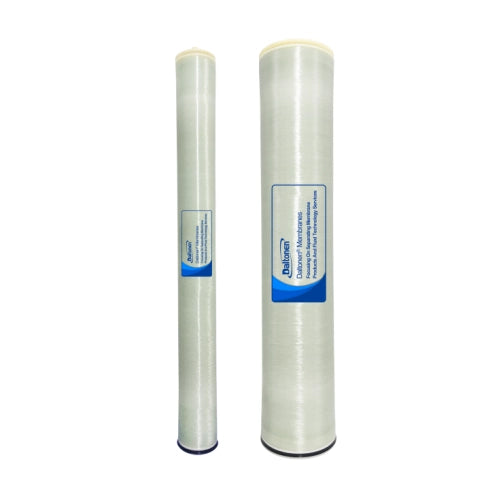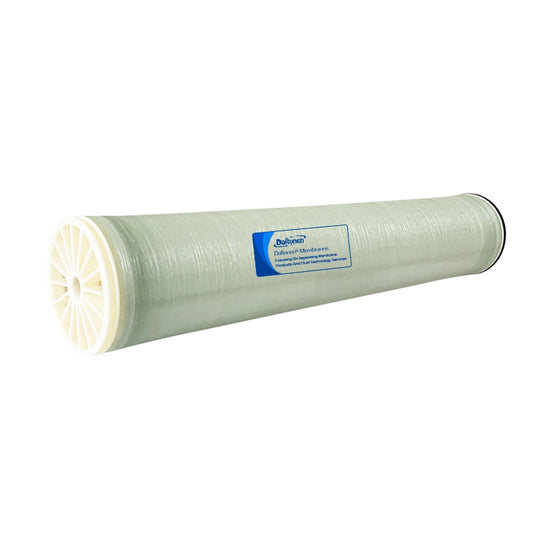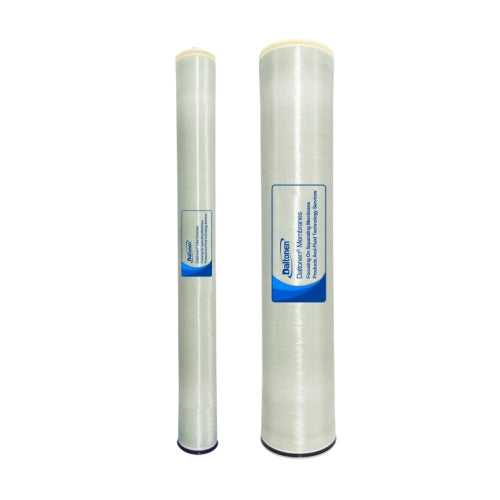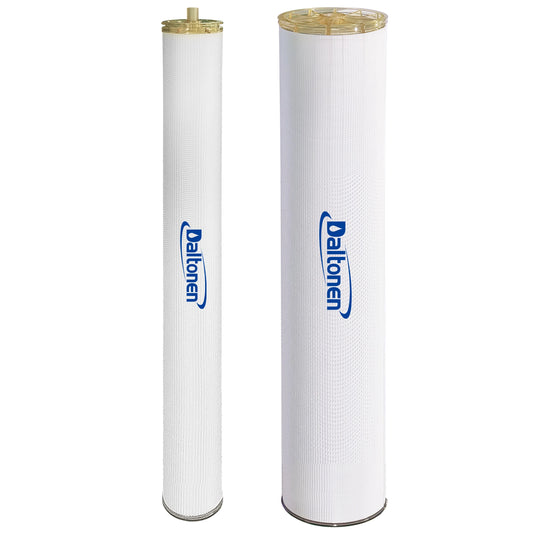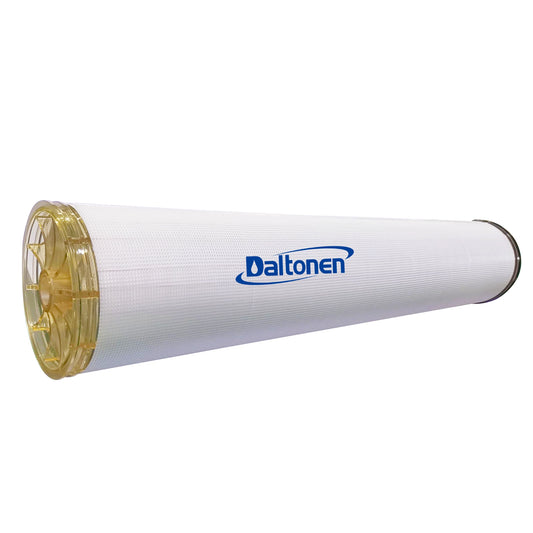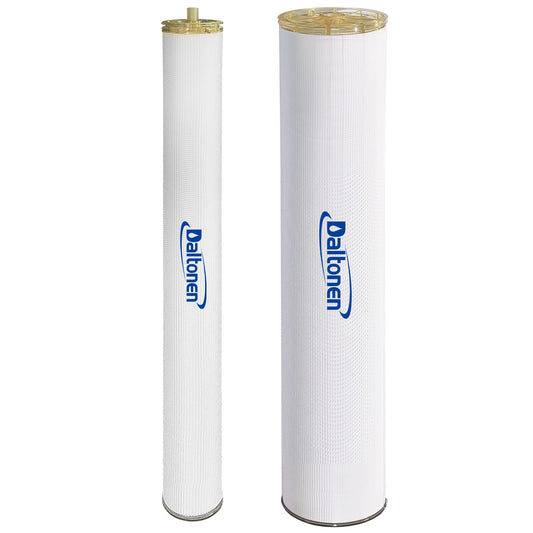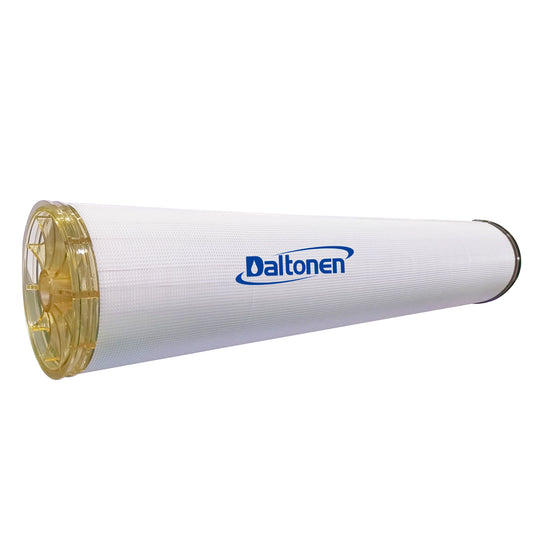Thermal Disinfection Membrane: Revolutionizing Sterilization, Empowering Multi-Industry Hygiene Safety
Abstract: Thermal disinfection membrane technology, operating through the dual mechanism of "physical thermal inactivation + precision filtration," provides an efficient, environmentally friendly, and reliable sterilization solution for numerous industries with stringent hygiene requirements, such as healthcare, food and beverage, pharmaceuticals, and laboratories. This article provides an in-depth analysis of its principles and advantages, showcases its wide-ranging applications across sectors through detailed case studies, and explores future development trends.
I. Core Technology of Thermal Disinfection Membranes: Principles and Superior Advantages
A thermal disinfection membrane is a specially designed membrane material (commonly PTFE, PES, or metallic) whose core technology lies in the seamless integration of high-efficiency precision filtration with physical thermal disinfection:
- Precision Physical Filtration: Membrane pore sizes are typically in the range of 0.1-0.01 micrometers (µm), capable of trapping the vast majority of bacteria (0.5-5 µm), mold spores (1-10 µm), yeast, protozoa (such as Giardia, Cryptosporidium), and particulate impurities in water. This itself acts as a powerful physical barrier.
- Instantaneous High-Temperature Inactivation: By incorporating heating elements (e.g., electric heating wires) within the membrane module or designing external heat exchange systems, the fluid being processed (liquid/air) is heated to a set high temperature (typically 80°C - 95°C) instantaneously as it flows across the membrane surface. This high temperature achieves thorough, physical inactivation by destroying critical microbial structures (e.g., cell membranes, proteins, nucleic acids).
- Chemical-Free: The entire process does not rely on any chemical disinfectants (e.g., chlorine, ozone, peracetic acid), fundamentally eliminating the generation of disinfection by-products (DBPs) such as trihalomethanes and haloacetic acids, as well as the risk of chemical residue.
- Broad-Spectrum, High-Efficiency Inactivation: High temperature is effective against bacteria, viruses (including those resistant to chemical disinfectants/UV, such as adenoviruses, noroviruses, rotaviruses), spores, parasite eggs, etc., and is less prone to inducing microbial resistance.

Core Advantages:
- Highest Safety Level: Physical inactivation, no chemical addition, unparalleled safety.
- Excellent and Reliable Sterilization Efficacy: Dual assurance of high-precision filtration and high-temperature thermal inactivation, achieving inactivation efficiency from 4-log (99.99%) to >6-log (99.9999%) for various microorganisms (including resistant pathogens).
- Environmentally Friendly: Zero chemical pollution, zero disinfection by-products.
- Convenient Operation and Maintenance: Relatively simple processes, eliminating the need for frequent purchase, storage, and dosing of chemicals.
- Potential for Continuous Operation: Easily integrated with other technologies for systematic, automated continuous disinfection.
- Long-Term Cost Savings: Reduced costs for chemical purchase, transportation, storage, and disposal.
II. The Prominent Stage for Thermal Disinfection Membranes: Detailed Analysis of Key Applications and Industry Case Studies
-
Medical Device Sterilization and Cleaning: The "Gold Standard" for Medical Safety
-
Application Scenarios:
- Sterility Assurance for Final Rinse Water: Critical for endoscopes, surgical instruments, implants, etc., during the final rinse step after cleaning/disinfection but before use. Using purified water (PW) or water for injection (WFI) treated by thermal disinfection membrane for the final rinse completely eliminates the risk of microbial recontamination of instruments by rinse water.
- Disinfection of Cleaning Water Systems: Integrated into instrument washers or central cleaning water distribution loop systems to continuously disinfect cleaning water, ensuring water safety throughout the cleaning process.
- Water for Aseptic Preparation: Used in purified water (PW)/water for injection (WFI) systems for preparing rinses, disinfectants, or diluents.
- Core Value: Eliminates biofilm risk, prevents surgical site infections (SSIs), ensures patient safety, complies with stringent regulations like GMP, FDA, AAMI.
-
Representative Case Studies:
- Mayo Clinic (USA): Integrated thermal disinfection membrane modules into automated endoscope reprocessors in their leading endoscopy center. This system provides real-time, in-line heating and ultrafiltration treatment for the final rinse water after each cleaning cycle, heating the water to >85°C through a 0.1 µm membrane. Independent validation confirmed the system consistently provides microbiologically sterile rinse water for the complex channels of endoscopes, significantly reducing the risk of endoscope-related infections. Officially released quality data showed a 75% decrease in infection reports related to endoscopes after implementing this technology.
- Johnson & Johnson Medical Devices: Installed in-line thermal disinfection membrane systems (often with redundant parallel design) at critical points within the purified water distribution loops on multiple surgical instrument reprocessing lines. The system operates 24/7, maintaining circulating water at 85-90°C while filtering/disinfecting through a 0.2µm PTFE membrane. This FDA 510(k)-cleared system is used to produce rinse water for high-level disinfection of instruments meeting ISO 17664 standards. J&J explicitly stated in their quality reports that over five years of operation, no instrument batch recalls occurred due to rinse water contamination.
-
Application Scenarios:
-
Food & Beverage Industry: Safeguarding "Safety on the Tip of the Tongue" from the Source
-
Application Scenarios:
- Terminal Sterilization for Cold-Fill Products: Replacing traditional hot-fill or chemical preservatives for flavor- and heat-sensitive beverages (premium juices, teas, plant-based drinks, carbonated drinks, dairy), condiments (soy sauce, vinegar), beer, etc. Products are precisely heated to a controlled temperature point (e.g., 70-95°C for seconds) pre-filling, passed through a thermal membrane module for instantaneous sterilization, and rapidly cooled to ambient temperature for filling.
- Sterile Treatment of Ingredient Water: Microbiological purification of water used in beverages, dairy products, alcoholic drinks, and infant food.
- Sterile Water Loops and CIP Final Rinse Water: Disinfection of sterile water in circulating cleaning systems for production lines and vessels (tanks, piping), and final rinse water in CIP/SIP (Clean/Sterilize-in-Place) systems to prevent recontamination.
- Air Quality Assurance: Providing sterile air (often core to air handling units or laminar flow hoods) in high-cleanliness areas by heating air and filtering it through high-efficiency material.
- Core Value: Preserves flavor and nutrients, extends shelf life (truly "additive-free" long shelf life), enhances product quality and value, meets regulations (FDA, EU, GB) for commercial sterility or microbial control.
-
Representative Case Studies:
- Evian (Danone Group, France): Upgraded its core water treatment stage before final filling, introducing a thermal disinfection membrane system combining precision filtration (0.1 micron) and instantaneous heating (88°C) on key filling lines. This system processes tens of thousands of tons of natural mineral water daily, achieving commercial sterility for filling while completely avoiding potential subtle impacts on the unique mineral composition and taste profile caused by traditional ozone or pasteurization (Danone emphasizes preserving "Purity of Taste"). Evian thus prominently markets its flagship products as "No Ozone Added" and "Physically Sterilized to Ensure Natural Purity".
- A Leading Asian Premium Tea Brand (Name subject to NDA): For its signature cold-brew tea product line (preservative-free and highly heat-sensitive), implemented a plate thermal disinfection membrane system with precise temperature control (85±2°C) and processing time under 30 seconds. Through meticulous process design, the finished product retained over 98% of polyphenol and aroma compound activity while achieving a 6-month shelf life under ambient distribution (non-refrigerated) – compared to only 1-2 weeks previously – maintaining a 100% microbial pass rate. This enabled the brand to successfully enter premium convenience stores and international markets, achieving ISO 22000 and BRCGS AA grade food safety management certifications.
-
Application Scenarios:
-
Pharmaceutical & Biotechnology: The Cornerstone of Cleanliness in Life Sciences
-
Application Scenarios:
- Water for Injection (WFI): Serving as an auxiliary or final sterilizing barrier in WFI distribution loops or points-of-use (commonly combined with pasteurization).
- Buffer and Media Preparation for Biologics: Ensuring sterile filtration for buffers and media essential in cell culture and bioreactor operations.
- Sterile Gas Filtration: Providing sterile filtration for compressed air, nitrogen, CO2, and other process gases (requiring specialized pressure/temperature-resistant design) entering critical areas (Grade A laminar flow hoods, isolators, bioreactors).
- Equipment Cleaning/Sterilization Validation Water: Used for rinsing equipment and performing sterilization validation.
- Core Value: Meets the most stringent global mandatory sterility requirements (US, EU, China GMP, FDA, EMA), ensures sterility of high-risk drugs, effectively reduces endotoxin levels, crucial for product quality and patient safety.
-
Representative Case Studies:
- Genentech (Roche Group): Deployed redundant 0.1µm thermal disinfection membrane modules (operating at 92°C) in the feed systems supplying media to large-scale bioreactors for monoclonal antibody (mAb) commercial production at one facility. As a critical barrier within a multi-layer approach, the system effectively controlled exogenous microbial contamination risk over hundreds of production batches, maintaining contamination incidence rates from media below 1 in 100,000 (far exceeding internal strict standards). Designed following ISPE GAMP 5, it successfully passed FDA Pre-Approval Inspection (PAI). Roche highlighted the technology's contribution to eliminating chemical use and reducing environmental burden in its annual sustainability report.
- A Major Chinese CRO (Contract Research Organization): Equipped all air supply terminals in areas involving live operations (SPF animal rooms, pathogen testing areas) in its newly built high-standard GLP animal lab and vaccine pilot plant with heat disinfection membrane air filters (HEPA grade H13-H14) capable of withstanding online Steam-in-Place (SIP) sterilization at 140°C. Combined with high temperature, these filters effectively trap and physically kill airborne pathogens, including highly infectious experimental microorganisms, forming a robust biocontainment barrier. The facility received AAALAC International accreditation.
-
Application Scenarios:

-
Laboratories & Biosafety: Ensuring Precision and Robust Protection in Research
-
Application Scenarios:
- High-Purity Sterile Water Systems: Ultrapure water/purified water systems in cell culture labs, PCR suites, microbiology testing labs, especially at points requiring near-sterile water (e.g., for cell experiments).
- Biological Safety Cabinet (BSC)/Lab Exhaust Air Treatment: High-efficiency filtration and sterilization for recirculated air inside BSCs or exhaust air from labs (particularly involving high-risk pathogens).
- Isolator/Aseptic Pass-Through Sterile Air: Ensuring sterilization of air entering and exiting isolators (fresh and recirculated air).
- Specific Disinfection Equipment Components: E.g., sterile cooling water treatment for autoclaves.
- Core Value: Protects research samples from contamination, ensures accurate and reliable experimental data; safeguards lab personnel and the environment from hazardous microorganisms; meets requirements for biosafety labs (BSL-2/3/4), ISO 15189 lab accreditation, etc.
-
Representative Case Studies:
- A National CDC P3 Laboratory: Implemented a new composite filter system with integrated heating elements (combining HEPA filtration and heating) within Biological Safety Cabinets (BSCs) used for high-risk respiratory pathogen research (e.g., novel influenza viruses) in a BSL-3 lab. Upon completion of experiments and after contaminant settling, an internal program heats the recirculated cabinet air to >200°C through the filter for a specified duration, achieving thorough inactivation of high-risk pathogens trapped on the filter or potentially remaining in the chamber. The system meets NSF/ANSI 49 Appendix F requirements for sterilization performance, significantly reducing exposure risk for maintenance personnel during filter changes. Note: Actual product validation specifics may vary.
- Global Leading Life Science Supplier (e.g., MilliporeSigma): Offers terminally sterilizing grade filters with integrated heating sterilization capabilities (e.g., 0.1μm PES membrane cartridges) as a key option in its high-end lab ultrapure water systems (e.g., Milli-Q® IQ series). The unit automatically performs a self-cleaning/sterilization cycle (approx. 80°C) periodically (e.g., weekly) or on-demand. Independent university and pharma lab data shows such systems consistently maintain microbial loads (CFU/ml) at water outlets well below the suggested action levels in USP <1231>, ensuring reliability for the most sensitive experiments. Often regarded as key compliance evidence during lab accreditation audits.
-
Application Scenarios:
-
Drinking Water & Specialty Water Treatment: Emerging Trend for Terminal Safety Assurance
-
Application Scenarios:
- Community/Building Point-of-Use/Entry (POU/POE) Drinking Water: Acting as the core terminal disinfection unit for central water purification systems.
- Hospital Sterile Water Supply: Used for disinfection of handwashing and procedure water in sensitive areas like ICUs, transplant units, neonatal wards (especially critical against Legionella).
- High-End Residential Water Treatment Systems: The ultimate barrier for homes pursuing ultimate safety and comfort.
- Swimming Pools, Spa Water Systems: Supplement or alternative solution for circulating water disinfection (particularly beneficial for chlorine-sensitive individuals).
- Core Value: Provides the most reliable, chemical-free terminal physical disinfection, especially suitable against resistant pathogens (Legionella), immunocompromised populations, and settings demanding the utmost safety.
-
Representative Case Studies:
- Changi General Hospital, Singapore: Upgraded all handwashing and medical water outlets in its Intensive Care Unit (ICU) wards by installing instantaneous compact thermal disinfection membrane processors (flow ~2 L/min, heats to >80°C) after the existing water treatment system. The system automatically initiates nightly "pulse sterilization" cycles. Follow-up studies by the hospital's infection control department showed the previously persistent Legionella spp. contamination rate in the ICU water pipes decreased from an average of 5-8% to zero detection, significantly reducing the risk of hospital-acquired pneumonia. Related findings were published in the Journal of Hospital Infection.
- Vessi Premium Home Water Purifier (North American Market): Its flagship product utilizes patented "Thermal Filtration™" technology, the core of which includes a heatable 0.01-micron membrane module. When the user requests water, the system instantly heats the filtered water to near-boiling temperature (95-100°C) for final inactivation within seconds, offering the choice of near-ambient or warm water output. The product passes stringent NSF/ANSI 55 (UV), 53 (filtration), 42 (aesthetics) certifications, along with independent lab tests for viral (MS2 bacteriophage surrogate) and bacterial inactivation, guaranteeing microbial safety within the full lifecycle (e.g., 2000L). Its key differentiators include using no chemicals or pressurized storage tanks, eliminating recontamination risks, attracting health-and eco-conscious consumers and medical professionals.
-
Application Scenarios:
III. Practical Recommendations for Implementing Thermal Disinfection Membrane Technology
- Scientific Selection is Paramount: Choose the most suitable membrane material (hydrophilic PTFE, PES, PVDF, stainless steel), pore size, membrane configuration (flat sheet, hollow fiber), membrane area, power rating, and control level based on the medium (gas/liquid), flow rate, temperature requirements, microbial challenge level, regulatory standards, and physical installation space. Seek expert advice from leading suppliers (e.g., Pall, 3M, Merck Millipore, Donaldson, Alfa Laval).
- System Integration and Stability: The thermal disinfection membrane is often a core element within a complex system. Meticulous attention is required for precise temperature control (PID algorithms), pressure protection, flow stability, power supply compatibility, and redundancy design (especially for critical applications). PLC/SCADA automation is crucial for stable operation.
- Return on Investment (ROI) Analysis: While the initial investment in a thermal disinfection membrane system might be higher than traditional methods (e.g., chemical dosing pumps, UV lamps), its significant advantages include lower long-term chemical procurement, storage, and labor costs; potential energy savings (compared to prolonged heating); reduced risk of batch losses due to inconsistent disinfection; avoidance of compliance risks and fines related to DBP or residue exceedances; and enhanced brand environmental value. The incremental investment is often recouped within 1-3 years.
- Maintenance Strategy and Cost: Membrane fouling is the primary maintenance consideration. Design appropriate upstream pretreatment (e.g., safety filters), validate regular backwashing and chemical-enhanced cleaning (CIP) protocols (using compatible cleaning agents), and monitor parameters like transmembrane pressure (TMP) to plan component replacement cycles effectively. Ensure availability of spares and service provider support.
- Industry Certification and Validation: Compliance with specific industry regulations (e.g., pharma, food, devices) is critical. Verify upfront if suppliers provide products conforming to relevant standards (e.g., US FDA Drug Master File (DMF), EU CE marking, UL/NSF listings) or supporting validation documentation (IQ/OQ/PQ templates, microbial challenge reports, etc.).
IV. Technological Challenges and Future Directions
-
Challenges:
- Energy Consumption Optimization: Thermal energy is a major operating cost. Developing more energy-efficient heating methods (e.g., electromagnetic induction, high-efficiency heat exchangers), heat recovery technologies, and precise temperature control strategies (e.g., non-continuous pulsed operation) is vital.
- High Turbidity/High Organic Tolerance: While pre-filtration is essential, there's a need for membranes with improved resistance to fouling by colloids and organics. Stronger anti-fouling coatings or easier-to-clean membrane structures are required.
- Extreme Temperature Adaptability: Novel membrane materials (e.g., ceramic-metal composites) and sealing technologies are needed for special industrial applications involving corrosive or extreme temperature/very low temperature fluids.
- Cost in Single-Use Applications: Cost control and large-scale manufacturing challenges exist for single-use sterile thermal membrane filters used in critical sterile fluid paths within bioprocessing.
-
Development Directions and Outlook:
- Smarter Systems: Integration of sensors (temperature, pressure, flow, TOC, rapid microbial detection) with AI analytics to enable predictive maintenance, closed-loop control for parameter optimization, and real-time performance verification.
- More Compact and Efficient: Promoting designs for higher membrane packing density, lower thermal inertia membrane modules, and miniaturized POU applications.
- Material Breakthroughs: Exploring nanoscale coatings, graphene-derived materials, etc., to enhance thermal efficiency, antimicrobial properties, mechanical strength, and chemical resistance.
- Cross-Industry Integration: Seamlessly embedding thermal membrane modules as "sterile core units" into diverse equipment (medical device washers, bioreactors, filling lines, air handling units).
- Expansion into Emerging Markets: Accelerating the deployment for drinking water safety assurance, community healthcare, and basic lab applications in developing countries, establishing cost-effective reliable solutions.
- Circular Economy: Developing membrane products that are easier to regenerate/recycle (e.g., specific thermoplastics) or can be completely incinerated for harmless disposal.
Conclusion
Thermal disinfection membrane technology, with its dual guarantee of "high-precision filtration + physical thermal inactivation" for sterility assurance, its absolute chemical-free nature, and its potent efficacy against hard-to-kill pathogens, is profoundly reshaping sterilization practices in core fields such as healthcare, food & beverage, biopharmaceuticals, life sciences research, and water safety. From sterile water sources protecting endoscope safety in top hospitals, to bottling lines preserving natural flavors; from guarding purified water systems in biopharma, to respiratory protection barriers in high-risk labs, and finally to home water endpoints, its empirical case studies fully demonstrate its outstanding efficacy and broad adaptability.
Despite remaining challenges in energy optimization, fouling resistance, application under extreme conditions, and cost control, its development momentum is strong, moving rapidly towards intelligence, miniaturization, material innovation, system integration, and emerging markets. As global demands for health safety, environmental protection, and sustainable development continue to escalate, thermal disinfection membrane technology, as an efficient, safe, and green solution, will take on significant responsibilities in even broader application scenarios. It will continue to provide a solid and reliable foundation for human health and the clean future of industrial manufacturing. Its position in the future sterilization landscape is not only solid but holds boundless potential.
